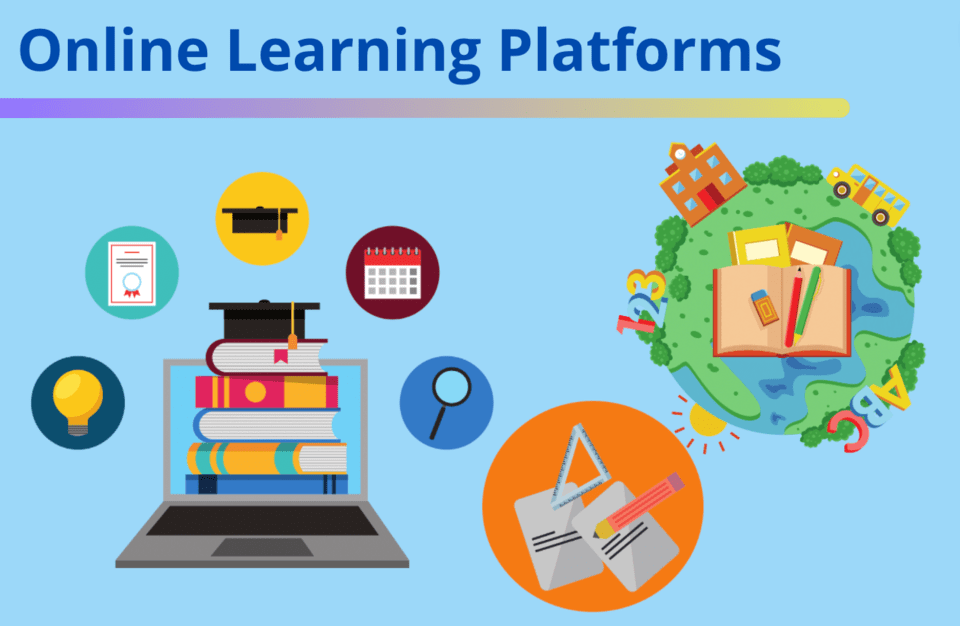Education and Study for Children and Kids: How to Build Solid Study Behaviors
Education and Study for Children and Kids: How to Build Solid Study Behaviors
Blog Article
The Role of E-Learning fit the Future of Education for Children
As typical education and learning systems advance, the integration of e-learning is emerging as an essential force in shaping the future of education for children. Recognizing the full extent of this impact calls for checking out the complex effects of e-learning's duty in modern-day education and learning systems.
Interactive Knowing Environments
In the world of e-learning for children, interactive learning environments have actually become essential tools in improving educational outcomes. Education and study for children and kids. These digital systems include multimedia components such as video clips, animations, and gamified exercises to develop a interesting and vibrant academic experience. Notably, they change passive knowing right into an energetic process, thereby fostering better retention and understanding

Digital class and discussion online forums enable pupils to share concepts, ask inquiries, and team up on jobs, reproducing the advantages of standard classroom interactions. Interactive knowing atmospheres are not just supplemental instructional devices however necessary elements that enhance the discovering environment for kids.
Customized Education And Learning Paths
Taking advantage of the possibility of personalized education courses transforms the learning experience for children by providing to their distinct requirements and capabilities. E-learning systems, nonetheless, can utilize sophisticated algorithms and information analytics to tailor instructional web content, rate, and methods to each kid's particular needs.
Individualized education and learning paths likewise equip educators by giving thorough insights into pupil progress. Conversely, pupils succeeding in particular subjects can advance without being held back by a standardized educational program.
Moreover, e-learning systems can integrate diverse learning sources, such as interactive simulations, multimedia web content, and gamified lessons, to line up with different knowing designs. By suiting aesthetic, acoustic, and kinesthetic learners, personalized education and learning paths ensure that each youngster obtains the most efficient training approaches. Education and study for children and kids. Hence, leveraging individualized education and learning courses with e-learning contributes in creating a future-proof, comprehensive, and effective educational landscape for children
Enhancing Ease Of Access
While the benefits of individualized education and learning courses are considerable, boosting access is equally critical to make certain that e-learning systems can get to all children, regardless of their socio-economic background or geographical location. Digital incorporation is essential to link the instructional divide and offer equitable understanding opportunities. This can be accomplished with the growth of affordable, high-grade e-learning options that come on diverse gadgets, including computer systems, mobile phones, and tablet computers.
Furthermore, collaborations in between federal governments, non-profits, and economic sectors can assist in the circulation of necessary technology and net accessibility to underserved neighborhoods. Such cooperations can likewise support the production of local material in various languages, making certain cultural significance and understanding.
Moreover, adaptive learning innovations can be customized to accommodate youngsters with disabilities, supplying functions like text-to-speech, flexible text dimensions, and interactive components that satisfy various learning demands. These innovations not only equalize education however also encourage learners by providing devices that satisfy individual difficulties.
Creating Vital Abilities
With availability enhancements in area, the next critical aspect to address is the development of vital skills amongst young students. E-learning systems provide a special opportunity to cultivate a range of important skills that typical class settings might have a hard time to attend to comprehensively. Amongst these are critical thinking, analytical, and digital proficiency, which are progressively important in wikipedia reference the modern-day world.

In addition, e-learning systems often include collaborative devices like conversation online forums, team jobs, and peer reviews, which foster communication and teamwork abilities. These platforms additionally subject students to a huge array of digital devices and sources, boosting their digital proficiency. As students navigate different software program, applications, and on the internet sources, they become proficient at making use of modern technology properly and properly.
Fundamentally, e-learning not just supplements traditional education and learning however additionally furnishes students with the essential skills required to prosper in an interconnected and progressively digital world.
Overcoming Geographical Obstacles
The development of e-learning has dramatically reduced the geographical obstacles that typically impeded accessibility to top quality education. Before the digital transformation, trainees in remote or underprivileged locations commonly encountered minimal academic sources and chances. E-learning platforms now link this space, providing global accessibility to high-quality instructional web content regardless of place.
With on the internet courses, digital libraries, and interactive tools, students from varied geographical histories can engage with the same educational program provided in urbane institutions. This democratization of education and learning makes certain that every child, regardless of their physical location, has the possible to attain academic success. Furthermore, e-learning helps with access to customized subjects and professional trainers that might not be readily available locally.
Additionally, e-learning makes it possible for real-time collaboration between pupils and teachers from different components of the world, cultivating a global learning area. This interconnectedness not only enhances students' educational experiences yet likewise prepares them for a much more globalized workforce. By getting rid of geographical restrictions, e-learning is pivotal in developing a comprehensive educational setting where every youngster has the chance to thrive. The duty of e-learning extends beyond plain convenience; it is a transformative device that redefines ease of access in education.
Final Thought
E-learning is critical in forming the future of education and learning for kids by producing personalized and interactive learning atmospheres. It boosts accessibility, fosters crucial skill development, and conquers geographical barriers, ensuring all pupils gain accessibility to high-quality educational resources. This digital transformation equips learners with the sites devices required for expert and academic success, promoting inclusivity and collaboration on a global scale. E-learning, therefore, stands as a cornerstone in the evolution of modern education.
As standard education systems develop, the integration of e-learning is arising as an essential pressure in shaping the future of education for children. Thus, leveraging tailored education and learning paths through e-learning is crucial in developing a future-proof, comprehensive, and reliable educational landscape for youngsters.
While the advantages of individualized education and learning courses are considerable, improving accessibility is equally crucial to ensure that e-learning systems can get to all kids, irrespective of their my review here socio-economic background or geographical place. The function of e-learning prolongs beyond mere convenience; it is a transformative device that redefines availability in education.
E-learning is critical in shaping the future of education and learning for kids by producing customized and interactive learning settings.
Report this page